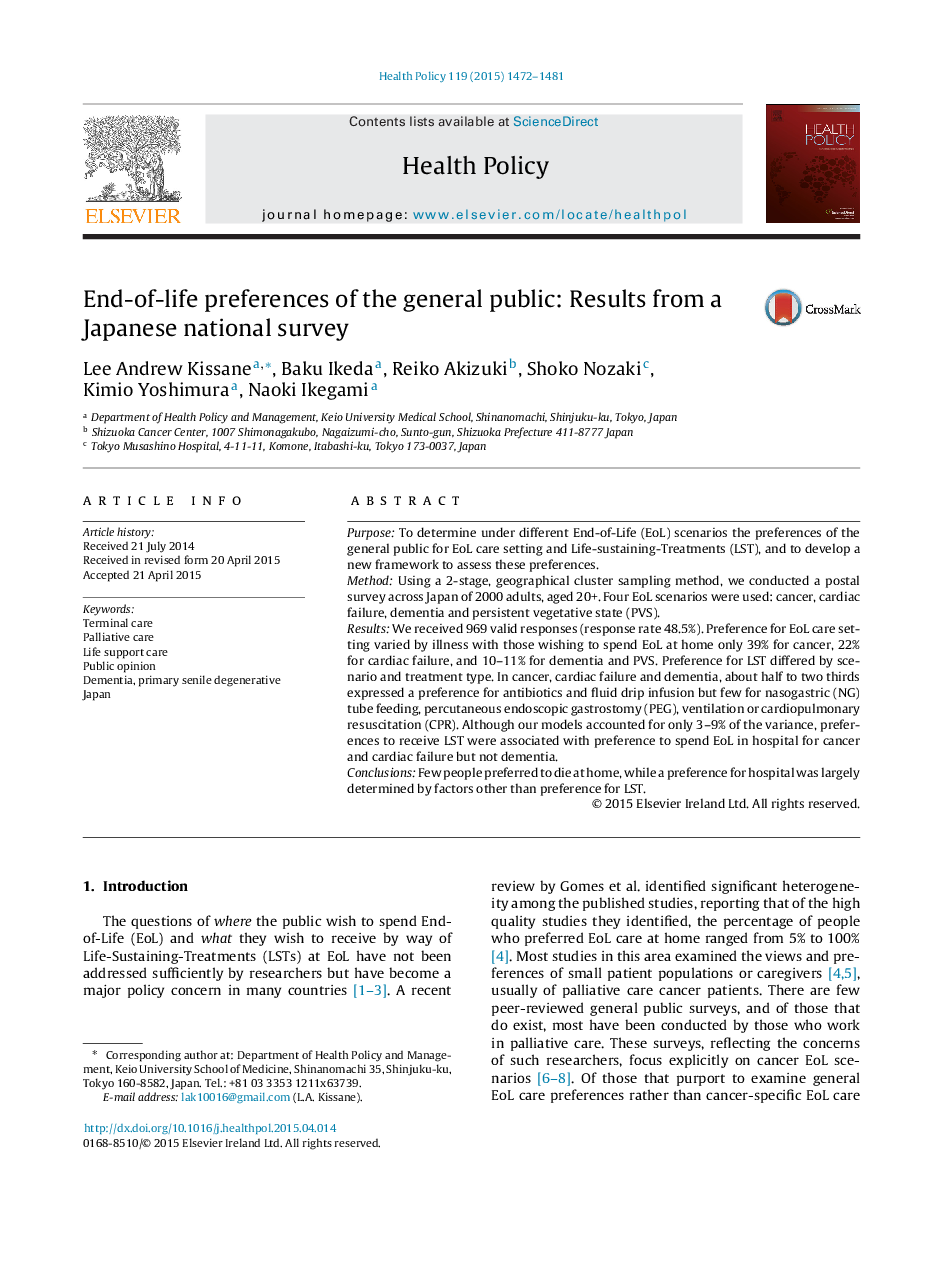| Article ID | Journal | Published Year | Pages | File Type |
|---|---|---|---|---|
| 6239094 | Health Policy | 2015 | 10 Pages |
â¢The proportion wanting to spend EoL in hospital is higher than at home in Japan.â¢At EoL hospital is preferred for cancer and cardiac failure; care home for dementia.â¢At EoL many want IVs and antibiotics but few want NG, PEG, ventilation and CPR.â¢Preferences for LST and EoL setting are associated for cancer and cardiac failure.â¢Preferences for LST and EoL care setting are not associated in dementia.
PurposeTo determine under different End-of-Life (EoL) scenarios the preferences of the general public for EoL care setting and Life-sustaining-Treatments (LST), and to develop a new framework to assess these preferences.MethodUsing a 2-stage, geographical cluster sampling method, we conducted a postal survey across Japan of 2000 adults, aged 20+. Four EoL scenarios were used: cancer, cardiac failure, dementia and persistent vegetative state (PVS).ResultsWe received 969 valid responses (response rate 48.5%). Preference for EoL care setting varied by illness with those wishing to spend EoL at home only 39% for cancer, 22% for cardiac failure, and 10-11% for dementia and PVS. Preference for LST differed by scenario and treatment type. In cancer, cardiac failure and dementia, about half to two thirds expressed a preference for antibiotics and fluid drip infusion but few for nasogastric (NG) tube feeding, percutaneous endoscopic gastrostomy (PEG), ventilation or cardiopulmonary resuscitation (CPR). Although our models accounted for only 3-9% of the variance, preferences to receive LST were associated with preference to spend EoL in hospital for cancer and cardiac failure but not dementia.ConclusionsFew people preferred to die at home, while a preference for hospital was largely determined by factors other than preference for LST.
